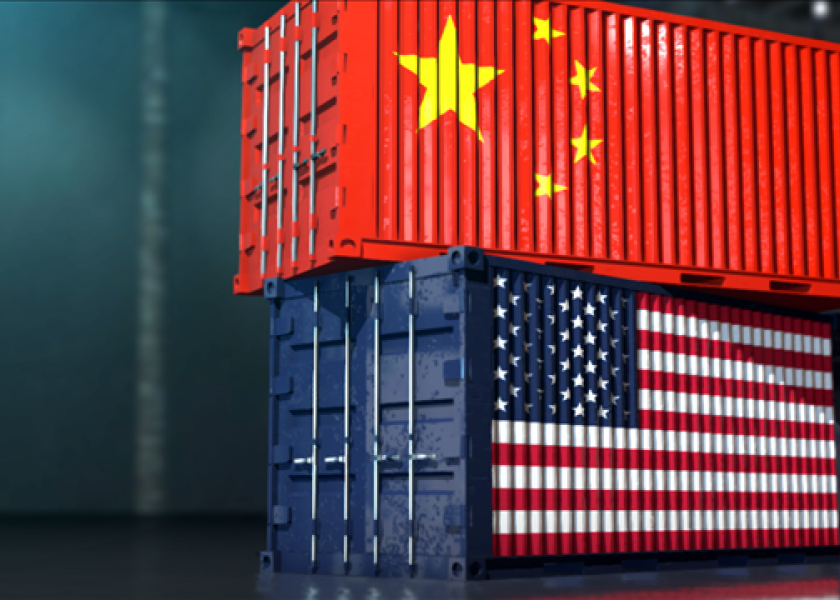U.S. senators approved bipartisan amendments to the annual defense policy bill that would prohibit...
U.S.-China Trade Friction Continues to Impact Farmers

When it comes to the U.S. trade portfolio, exports of farm goods have been a prevailing bright spot. However, while China is one of the biggest markets for U.S. producers, trade relations between the U.S. and China tend to fluctuate between frosty and ice cold, where it’s currently lingering.
From the middle of 2018 to the end of 2019, U.S. farm good exports to China fell by $26 billion with soybean exports accounting for most of the losses at roughly $9.4 billion.
In December, the House Select Committee on the Chinese Communist Party issued a report recommending the Biden administration revoke China’s most favored nation trade status under the World Trade Organization while also reducing U.S. dependence on China as a source for critical minerals and other goods.
Suzanne Shirbroun, President of the Iowa Soybean Association Board of Directors, warned congressional members in August that taking too tough of a trade stance would hurt U.S. farmers. While she acknowledged that China engages in unfair trade practices and violates intellectual property rights protections, Shirbroun advised lawmakers to “proceed cautiously” and avoid revoking China’s most favored nation status. “There is not another market that can completely replace the Chinese market for the American soybean farmer,” she said at the time.
However, Beth Ford, President and CEO of Land O’ Lakes and a member of the President’s Export Council, is promoting a four-point plan endorsed by 35 agricultural organizations representing all 50 states that aims to boost U.S. agriculture exports and diversify overseas buyers to limit over reliance on China.
In her letter on behalf of the Council to the Biden administration, Ford noted that U.S. food and agriculture exports reached nearly $200 billion in 2022, but this past year “we experienced a 9% decline in the value of U.S. food and agricultural exports, and a 16% decline in volume.”
Foreign markets, such as Brazil, the UK, and Asian countries including India, Japan, Indonesia, Malaysia, Philippines, Thailand, and Vietnam, can boost purchases of U.S. agriculture exports, particularly if the U.S. eliminates tariff and non-tariff barriers within these “priority regions and markets.”
For example, Mark Ein, Chairman of the President’s Export Council, stated that, “India remains a key market of interest for agricultural products. While India has a difficult record of negotiations, we urge continued efforts to address its longstanding trade barriers, such as their practice of creating additional export certificates that were not negotiated with U.S. regulatory authorities.”
In addition to improving support for exports of U.S. agricultural goods, Ford called on the Biden administration to “incentivize cost-effective U.S. production of ingredients” such as fertilizers, vitamins, and chemicals, which would guard against supply chain disruptions from foreign suppliers.
EDITOR’S TAKE:
It seems like the China-U.S. trade story is constantly in the news. While we want to decouple some strategic production and return it to the U.S., or at least to a more friendly nation, we also need to continue trading agricultural goods with China. As Suzanne Shirbroun from Land O’ Lakes points out, no other market can completely replace China. However, that begs the question – what is our strategy? Just like the stock market, diversification seems to be an obvious answer and piece of the puzzle. Identifying and cultivating new trading partners should be very high on our list of priorities. Developing new uses and products through research and development also comes to mind. And what about promoting more high value products to ship overseas? These ideas should be incorporated as part of a comprehensive strategy required to compensate for the roller coaster ride we experience with Chinese trade. Farmers/ranchers will continue to operate through their various commodity and trade organizations to expand markets for their products, but they cannot succeed alone. It will take a larger collaborative effort between trade organizations, other players in the food chain and our friends at USDA.








